MASTG-TECH-0031: Debugging
So far, you've been using static analysis techniques without running the target apps. In the real world, especially when reversing malware or more complex apps, pure static analysis is very difficult. Observing and manipulating an app during runtime makes it much, much easier to decipher its behavior. Next, we'll have a look at dynamic analysis methods that help you do just that.
Android apps support two different types of debugging: Debugging on the level of the Java runtime with the Java Debug Wire Protocol (JDWP), and Linux/Unix-style ptrace-based debugging on the native layer, both of which are valuable to reverse engineers.
Debugging Release Apps¶
Dalvik and ART support the JDWP, a protocol for communication between the debugger and the Java virtual machine (VM) that it debugs. JDWP is a standard debugging protocol that's supported by all command line tools and Java IDEs, including jdb, IntelliJ, and Eclipse. Android's implementation of JDWP also includes hooks for supporting extra features implemented by the Dalvik Debug Monitor Server (DDMS).
A JDWP debugger allows you to step through Java code, set breakpoints on Java methods, and inspect and modify local and instance variables. You'll use a JDWP debugger most of the time you debug "normal" Android apps (i.e., apps that don't make many calls to native libraries).
In the following section, we'll show how to solve the Android UnCrackable L1 with jdb alone. Note that this is not an efficient way to solve this crackme. Actually you can do it much faster with Frida and other methods, which we'll introduce later in the guide. This, however, serves as an introduction to the capabilities of the Java debugger.
Debugging with jdb¶
The adb command line tool was introduced in the "Android Basic Security Testing" chapter. You can use its adb jdwp command to list the process IDs of all debuggable processes running on the connected device (i.e., processes hosting a JDWP transport). With the adb forward command, you can open a listening socket on your host computer and forward this socket's incoming TCP connections to the JDWP transport of a chosen process.
$ adb jdwp
12167
$ adb forward tcp:7777 jdwp:12167
You're now ready to attach jdb. Attaching the debugger, however, causes the app to resume, which you don't want. You want to keep it suspended so that you can explore first. To prevent the process from resuming, pipe the suspend command into jdb:
$ { echo "suspend"; cat; } | jdb -attach localhost:7777
Initializing jdb ...
> All threads suspended.
>
You're now attached to the suspended process and ready to go ahead with the jdb commands. Entering ? prints the complete list of commands. Unfortunately, the Android VM doesn't support all available JDWP features. For example, the redefine command, which would let you redefine a class code is not supported. Another important restriction is that line breakpoints won't work because the release bytecode doesn't contain line information. Method breakpoints do work, however. Useful working commands include:
- classes: list all loaded classes
- class/methods/fields class id: Print details about a class and list its methods and fields
- locals: print local variables in current stack frame
- print/dump expr: print information about an object
- stop in method: set a method breakpoint
- clear method: remove a method breakpoint
- set lvalue = expr: assign new value to field/variable/array element
Let's revisit the decompiled code from the Android UnCrackable L1 and think about possible solutions. A good approach would be suspending the app in a state where the secret string is held in a variable in plain text so you can retrieve it. Unfortunately, you won't get that far unless you deal with the root/tampering detection first.
Review the code and you'll see that the method sg.vantagepoint.uncrackable1.MainActivity.a displays the "This in unacceptable..." message box. This method creates an AlertDialog and sets a listener class for the onClick event. This class (named b) has a callback method will terminates the app once the user taps the OK button. To prevent the user from simply canceling the dialog, the setCancelable method is called.
private void a(final String title) {
final AlertDialog create = new AlertDialog$Builder((Context)this).create();
create.setTitle((CharSequence)title);
create.setMessage((CharSequence)"This in unacceptable. The app is now going to exit.");
create.setButton(-3, (CharSequence)"OK", (DialogInterface$OnClickListener)new b(this));
create.setCancelable(false);
create.show();
}
You can bypass this with a little runtime tampering. With the app still suspended, set a method breakpoint on android.app.Dialog.setCancelable and resume the app.
> stop in android.app.Dialog.setCancelable
Set breakpoint android.app.Dialog.setCancelable
> resume
All threads resumed.
>
Breakpoint hit: "thread=main", android.app.Dialog.setCancelable(), line=1,110 bci=0
main[1]
The app is now suspended at the first instruction of the setCancelable method. You can print the arguments passed to setCancelable with the locals command (the arguments are shown incorrectly under "local variables").
main[1] locals
Method arguments:
Local variables:
flag = true
setCancelable(true) was called, so this can't be the call we're looking for. Resume the process with the resume command.
main[1] resume
Breakpoint hit: "thread=main", android.app.Dialog.setCancelable(), line=1,110 bci=0
main[1] locals
flag = false
You've now reached a call to setCancelable with the argument false. Set the variable to true with the set command and resume.
main[1] set flag = true
flag = true = true
main[1] resume
Repeat this process, setting flag to true each time the breakpoint is reached, until the alert box is finally displayed (the breakpoint will be reached five or six times). The alert box should now be cancelable! Tap the screen next to the box and it will close without terminating the app.
Now that the anti-tampering is out of the way, you're ready to extract the secret string! In the "static analysis" section, you saw that the string is decrypted with AES, then compared with the string input to the message box. The method equals of the java.lang.String class compares the string input with the secret string. Set a method breakpoint on java.lang.String.equals, enter an arbitrary text string in the edit field, and tap the "verify" button. Once the breakpoint is reached, you can read the method argument with the locals command.
> stop in java.lang.String.equals
Set breakpoint java.lang.String.equals
>
Breakpoint hit: "thread=main", java.lang.String.equals(), line=639 bci=2
main[1] locals
Method arguments:
Local variables:
other = "radiusGravity"
main[1] cont
Breakpoint hit: "thread=main", java.lang.String.equals(), line=639 bci=2
main[1] locals
Method arguments:
Local variables:
other = "I want to believe"
main[1] cont
This is the plaintext string you're looking for!
Debugging with an IDE¶
Setting up a project in an IDE with the decompiled sources is a neat trick that allows you to set method breakpoints directly in the source code. In most cases, you should be able to single-step through the app and inspect the state of variables with the GUI. The experience won't be perfect, it's not the original source code after all, so you won't be able to set line breakpoints and things will sometimes simply not work correctly. Then again, reversing code is never easy, and efficiently navigating and debugging plain old Java code is a pretty convenient way of doing it. A similar method has been described in the NetSPI blog.
To set up IDE debugging, first create your Android project in IntelliJ and copy the decompiled Java sources into the source folder as described above in the Reviewing Decompiled Java Code. On the device, choose the app as debug app on the "Developer options" ( Android UnCrackable L1 in this tutorial), and make sure you've switched on the "Wait For Debugger" feature.
Once you tap the app icon from the launcher, it will be suspended in "Wait For Debugger" mode.
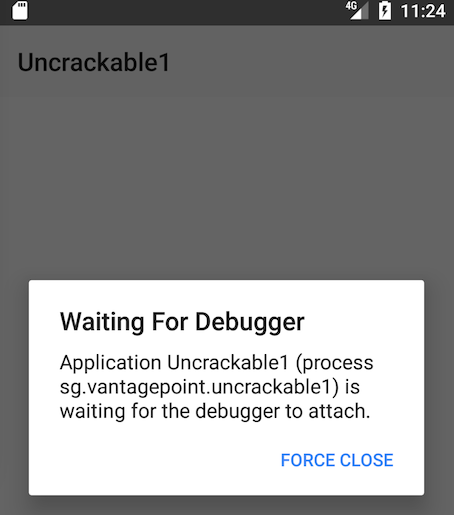
Now you can set breakpoints and attach to the app process with the "Attach Debugger" toolbar button.
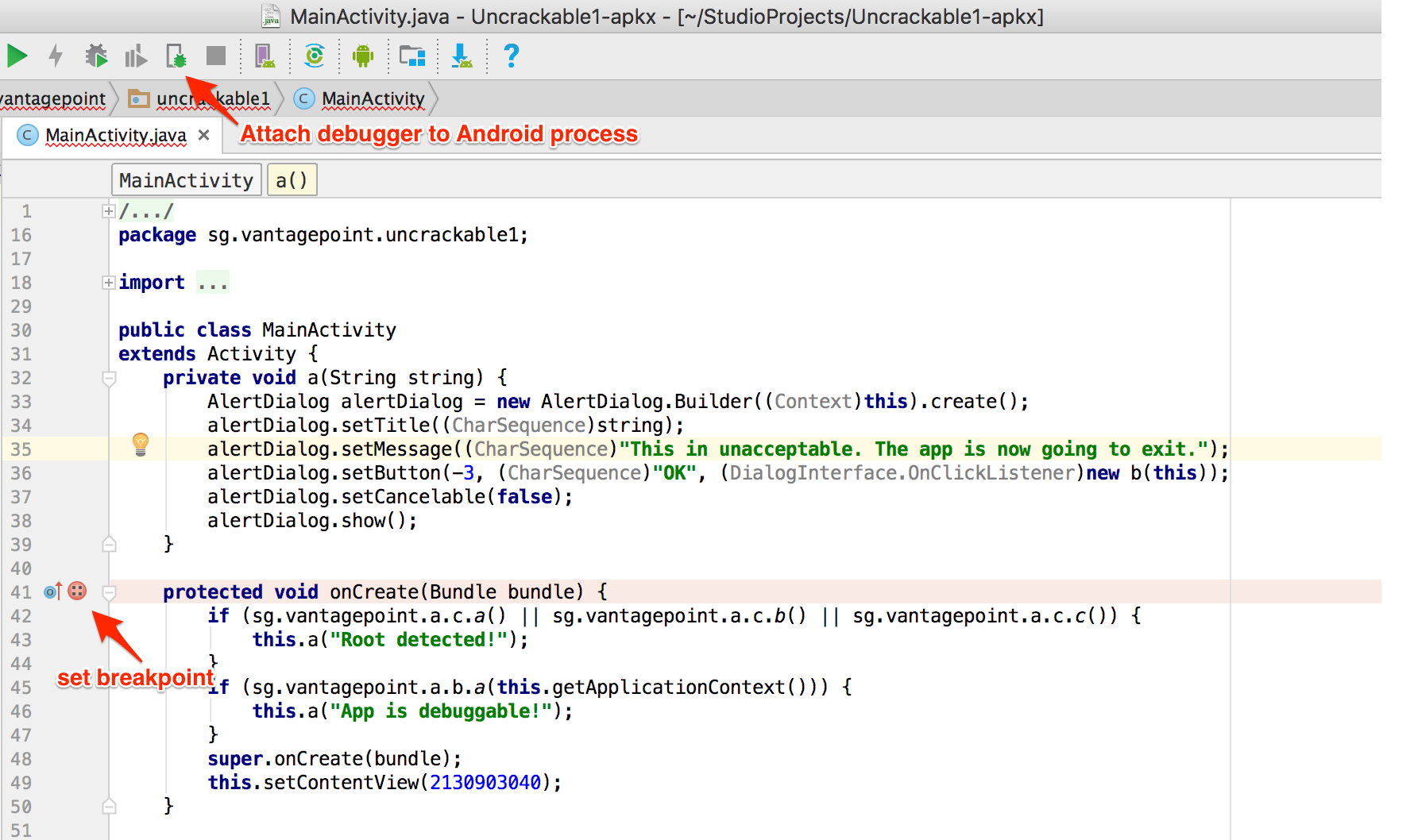
Note that only method breakpoints work when debugging an app from decompiled sources. Once a method breakpoint is reached, you'll get the chance to single step during the method execution.
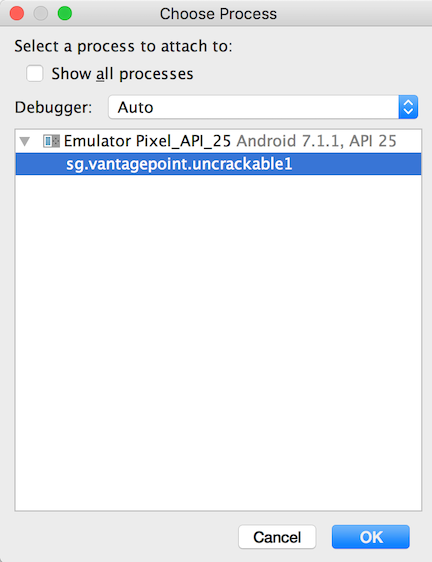
After you choose the app from the list, the debugger will attach to the app process and you'll reach the breakpoint that was set on the onCreate method. This app triggers anti-debugging and anti-tampering controls within the onCreate method. That's why setting a breakpoint on the onCreate method just before the anti-tampering and anti-debugging checks are performed is a good idea.
Next, single-step through the onCreate method by clicking "Force Step Into" in Debugger view. The "Force Step Into" option allows you to debug the Android framework functions and core Java classes that are normally ignored by debuggers.
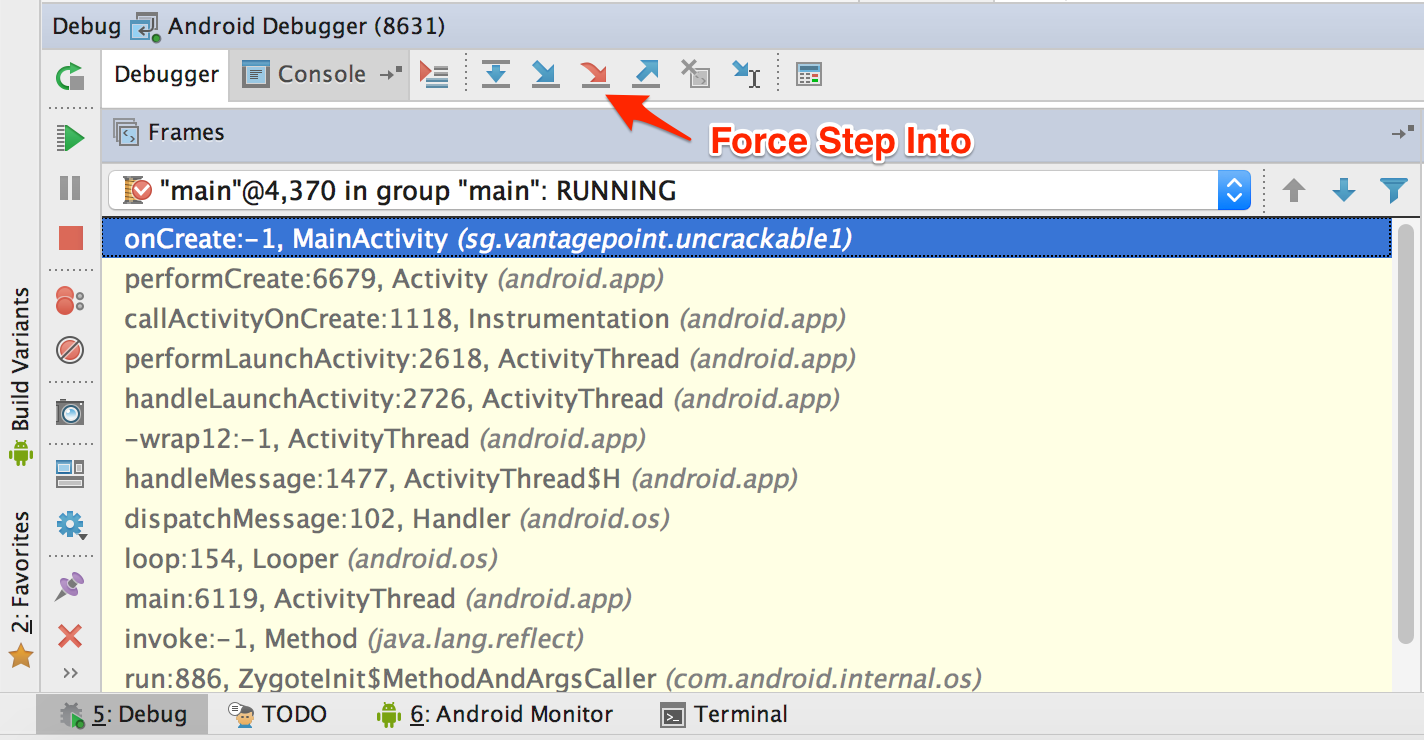
Once you "Force Step Into", the debugger will stop at the beginning of the next method, which is the a method of the class sg.vantagepoint.a.c.
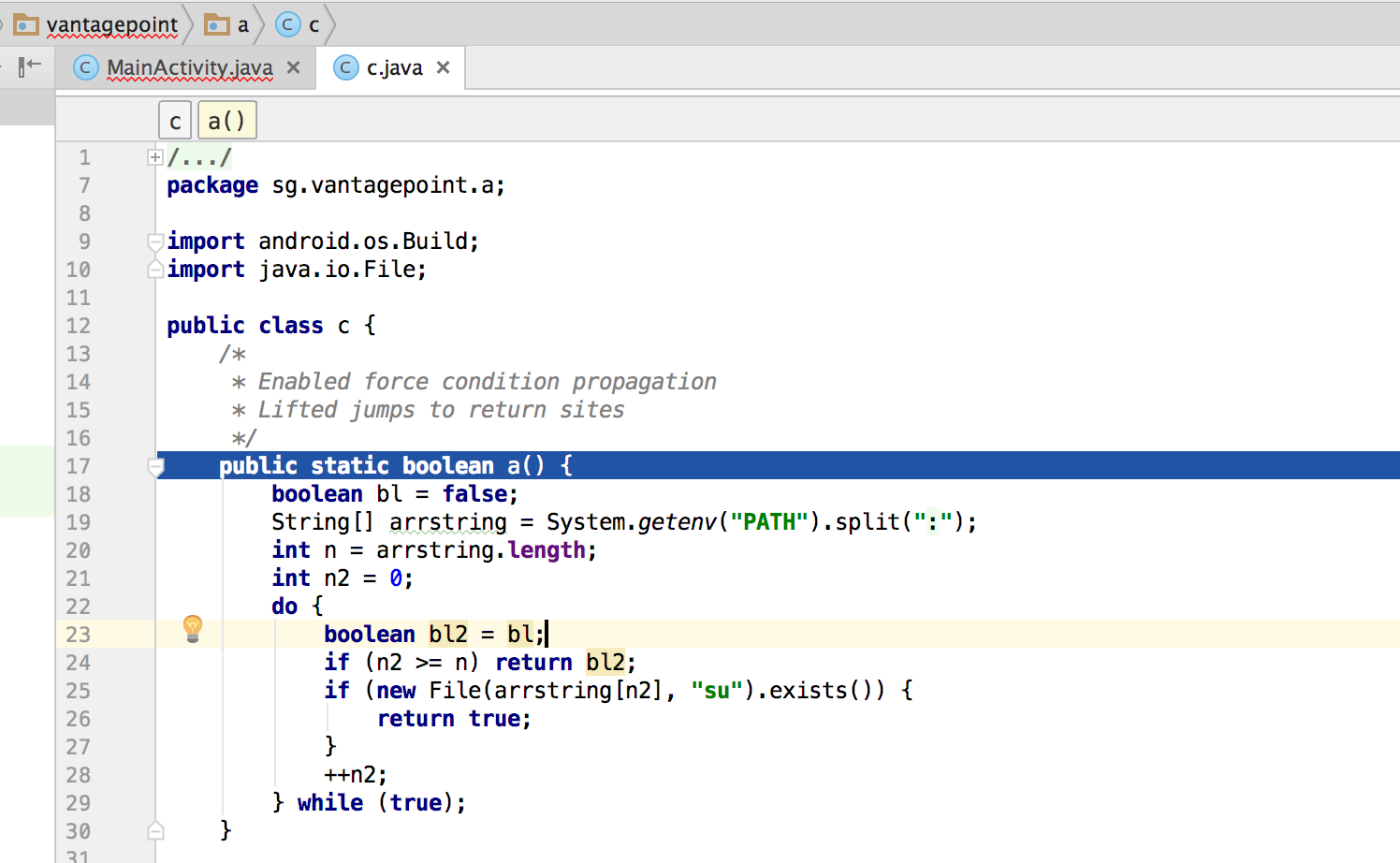
This method searches for the "su" binary within a list of directories (/system/xbin and others). Since you're running the app on a rooted device/emulator, you need to defeat this check by manipulating variables and/or function return values.
You can see the directory names inside the "Variables" window by clicking "Step Over" the Debugger view to step into and through the a method.

Step into the System.getenv method with the "Force Step Into" feature.
After you get the colon-separated directory names, the debugger cursor will return to the beginning of the a method, not to the next executable line. This happens because you're working on the decompiled code instead of the source code. This skipping makes following the code flow crucial to debugging decompiled applications. Otherwise, identifying the next line to be executed would become complicated.
If you don't want to debug core Java and Android classes, you can step out of the function by clicking "Step Out" in the Debugger view. Using "Force Step Into" might be a good idea once you reach the decompiled sources and "Step Out" of the core Java and Android classes. This will help speed up debugging while you keep an eye on the return values of the core class functions.
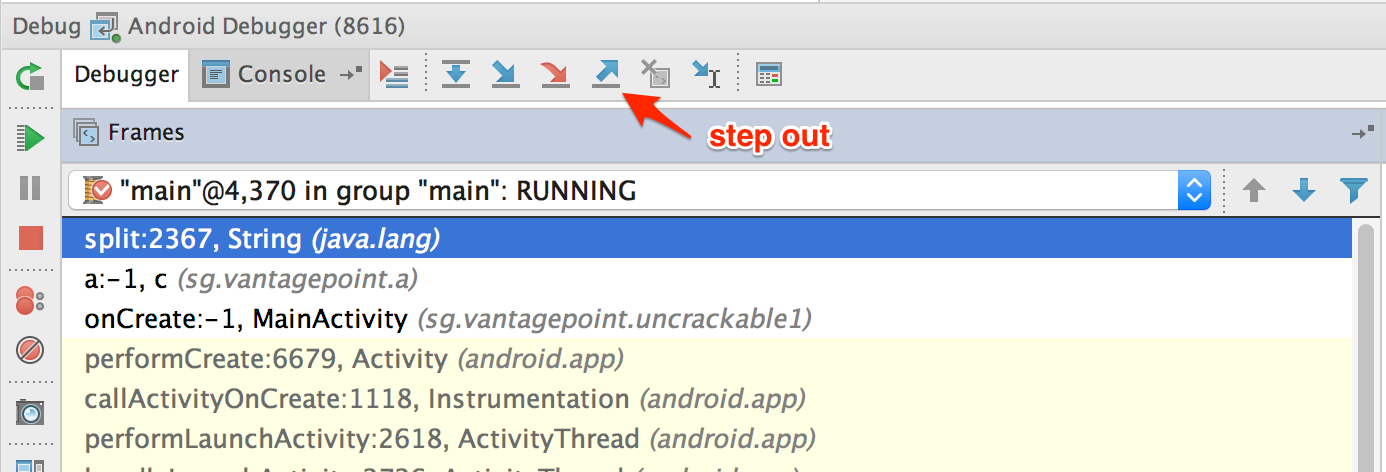
After the a method gets the directory names, it will search for the su binary within these directories. To defeat this check, step through the detection method and inspect the variable content. Once execution reaches a location where the su binary would be detected, modify one of the variables holding the file name or directory name by pressing F2 or right-clicking and choosing "Set Value".
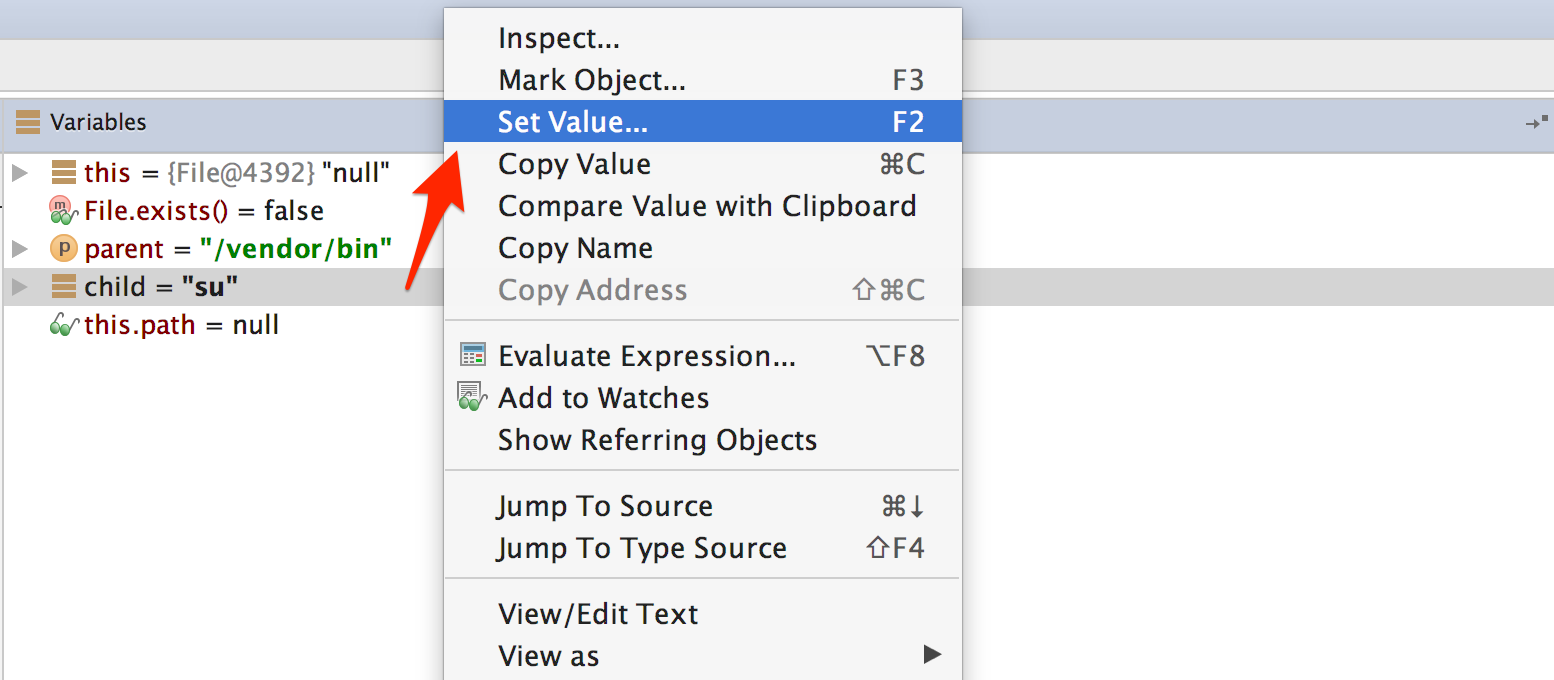

Once you modify the binary name or the directory name, File.exists should return false.

This defeats the first root detection control of the app. The remaining anti-tampering and anti-debugging controls can be defeated in similar ways so that you can finally reach the secret string verification functionality.
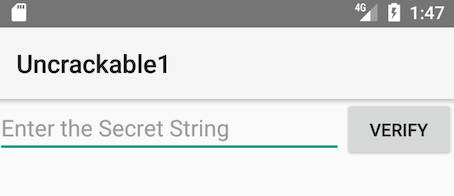

The secret code is verified by the method a of class sg.vantagepoint.uncrackable1.a. Set a breakpoint on method a and "Force Step Into" when you reach the breakpoint. Then, single-step until you reach the call to String.equals. This is where user input is compared with the secret string.

You can see the secret string in the "Variables" view when you reach the String.equals method call.


Debugging Native Code¶
Native code on Android is packed into ELF shared libraries and runs just like any other native Linux program. Consequently, you can debug it with standard tools (including GDB and built-in IDE debuggers such as IDA Pro) as long as they support the device's processor architecture (most devices are based on ARM chipsets, so this is usually not an issue).
You'll now set up your JNI demo app, HelloWorld-JNI.apk, for debugging. It's the same APK you downloaded in "Statically Analyzing Native Code". Use adb install to install it on your device or on an emulator.
adb install HelloWorld-JNI.apk
If you followed the instructions at the beginning of this chapter, you should already have the Android NDK. It contains prebuilt versions of gdbserver for various architectures. Copy the gdbserver binary to your device:
adb push $NDK/prebuilt/android-arm/gdbserver/gdbserver /data/local/tmp
The gdbserver --attach command causes gdbserver to attach to the running process and bind to the IP address and port specified in comm, which in this case is a HOST:PORT descriptor. Start HelloWorldJNI on the device, then connect to the device and determine the PID of the HelloWorldJNI process (sg.vantagepoint.helloworldjni). Then switch to the root user and attach gdbserver:
$ adb shell
$ ps | grep helloworld
u0_a164 12690 201 1533400 51692 ffffffff 00000000 S sg.vantagepoint.helloworldjni
$ su
# /data/local/tmp/gdbserver --attach localhost:1234 12690
Attached; pid = 12690
Listening on port 1234
The process is now suspended, and gdbserver is listening for debugging clients on port 1234. With the device connected via USB, you can forward this port to a local port on the host with the adb forward command:
adb forward tcp:1234 tcp:1234
You'll now use the prebuilt version of gdb included in the NDK toolchain.
$ $TOOLCHAIN/bin/gdb libnative-lib.so
GNU gdb (GDB) 7.11
(...)
Reading symbols from libnative-lib.so...(no debugging symbols found)...done.
(gdb) target remote :1234
Remote debugging using :1234
0xb6e0f124 in ?? ()
You have successfully attached to the process! The only problem is that you're already too late to debug the JNI function StringFromJNI; it only runs once, at startup. You can solve this problem by activating the "Wait for Debugger" option. Go to Developer Options -> Select debug app and pick HelloWorldJNI, then activate the Wait for debugger switch. Then terminate and re-launch the app. It should be suspended automatically.
Our objective is to set a breakpoint at the first instruction of the native function Java_sg_vantagepoint_helloworldjni_MainActivity_stringFromJNI before resuming the app. Unfortunately, this isn't possible at this point in the execution because libnative-lib.so isn't yet mapped into process memory, it's loaded dynamically during runtime. To get this working, you'll first use jdb to gently change the process into the desired state.
First, resume execution of the Java VM by attaching jdb. You don't want the process to resume immediately though, so pipe the suspend command into jdb:
$ adb jdwp
14342
$ adb forward tcp:7777 jdwp:14342
$ { echo "suspend"; cat; } | jdb -attach localhost:7777
Next, suspend the process where the Java runtime loads libnative-lib.so. In jdb, set a breakpoint at the java.lang.System.loadLibrary method and resume the process. After the breakpoint has been reached, execute the step up command, which will resume the process until loadLibraryreturns. At this point, libnative-lib.so has been loaded.
> stop in java.lang.System.loadLibrary
> resume
All threads resumed.
Breakpoint hit: "thread=main", java.lang.System.loadLibrary(), line=988 bci=0
> step up
main[1] step up
>
Step completed: "thread=main", sg.vantagepoint.helloworldjni.MainActivity.<clinit>(), line=12 bci=5
main[1]
Execute gdbserver to attach to the suspended app. This will cause the app to be suspended by both the Java VM and the Linux kernel (creating a state of "double-suspension").
$ adb forward tcp:1234 tcp:1234
$ $TOOLCHAIN/arm-linux-androideabi-gdb libnative-lib.so
GNU gdb (GDB) 7.7
Copyright (C) 2014 Free Software Foundation, Inc.
(...)
(gdb) target remote :1234
Remote debugging using :1234
0xb6de83b8 in ?? ()